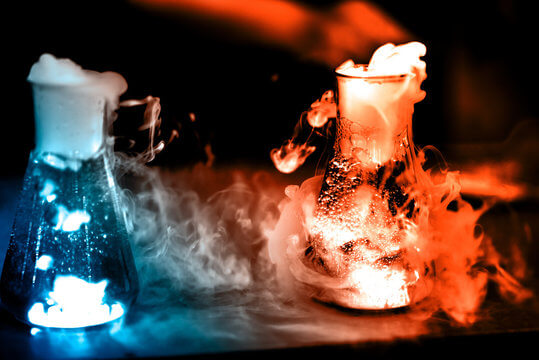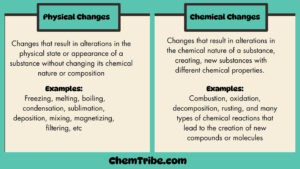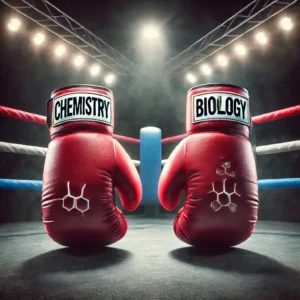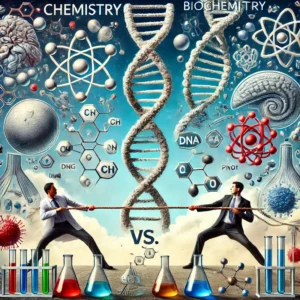In the previous section, we described chemical changes as those in which two substances react to form one or more new substances or those in which one substance changes to two or more new substances. In chemistry, such changes are referred to as chemical reactions.

For chemists to describe or explain chemical reactions to fellow chemists or other interested particles, using regular words or adjectives we use in our day-to-day communication is not very effective. They need to use the same “language”. In chemistry, this language is chemical equations and chemical formulae.
The most basic form of chemical equations is the word equations. As the name implies, word equations are representations or descriptions of chemical reactions using words instead of chemical formulas.
For instance:
Iron and Sulphur combine chemically to form Iron (II) Sulphide. The word equation for such a reaction is written as follows:
Iron + Sulpher →Iron (II) Sulphide
Magnesium also reacts with oxygen to produce magnesium oxide and the reaction is written as:
Magnesium+ Oxygen →Magnesium oxide
Interpreting Word Equations
I.
In word equations such as the ones above, reactants are written on the left-hand side of the arrow while the products are written on the right-hand side.
i.e. Reactants→ Products
II.
The forward arrow sign ( →) is used when the reactions are permanent and proceed only in one direction (like the above two reactions). However, when the reactions are reversible (like the sublimation of iodine), two arrow signs in opposite directions (⇌) are used.
i.e Iodine ⇌ Iodine vapor
III.
In synthesis reactions (or reactions in which two or more substances react to produce one or more substances), the arrow sign ( →) is usually read as “to give” while the (+) means “react with.”
The reaction of magnesium with oxygen above can, therefore, be read as:
Magnesium reacts with oxygen to give magnesium oxide
IV.
In decomposition reactions (or reactions in which one substance breaks down to produce two or more new substances), the arrow sign ( →) is read as “breaks down to give” while the (+) means “and.”
The reaction A below is, therefore, interpreted as water breaks down to give oxygen and hydrogen
- Water →Oxygen + Hydrogen
- Copper (II) nitrate→ copper (II) oxide + Nitrogen (IV) oxide +Oxygen
And reaction B can be interpreted as Copper (II) nitrate breaks down to give copper (II) oxide, Nitrogen (IV) oxide, and Oxygen
Limitations of Word Equations
As you can see, from a word equation, we can easily tell what’s going on in a reaction. In other words, they serve as a starting point for understanding chemical reactions. This implies that even without prior knowledge of chemical symbols or formulas, we can still interpret a chemical reaction.
On the flip side, word equations have a few limitations:
1. They give us no idea of the amounts of substances involved in the reaction.
In reaction A above, for instance, we can see that water breaks down to give oxygen and hydrogen. But how much oxygen and hydrogen are produced for a given amount of water? There are situations when we need to know this. For instance, if a large volume of these two gases is produced, we could end up with a dangerous pressure build-up in the containers or vessels they are being collected.
2. Word equations can become very long-winded.
The second problem with word equations is the fact that they can become very long-winded. The ones we’ve discussed above are all relatively simple. However, for reactions that involve many chemicals, some of which may have long and complex names, such as 2,5,5-trimethyl-2-hexene, then the use of word equations becomes less practical.
The most effective and practical way to write chemical equations is by using chemical symbols. We will cover this in the subsequent sections.



